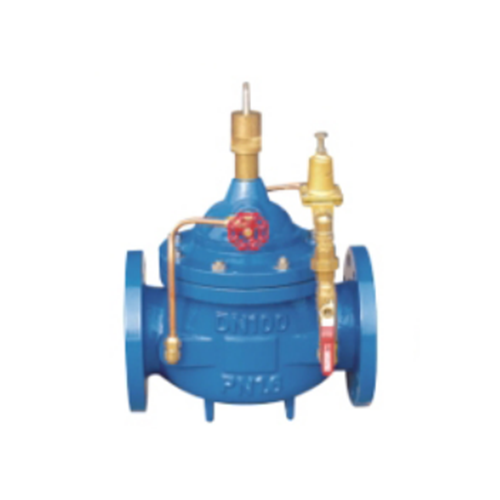
Gate Valve Materials Comparison: Cast Iron vs. Steel
Introduction
Gate valves are essential components in fluid control systems, widely used in industries such as water supply, oil and gas, chemical processing, and wastewater management. The choice of material for gate valves significantly impacts their performance, durability, and cost-effectiveness. Two of the most commonly used materials for gate valves are cast iron and steel. Each material has distinct properties that make it suitable for specific applications.
This comprehensive comparison explores the differences between cast iron and steel gate valves, focusing on their mechanical properties, corrosion resistance, temperature and pressure handling, cost, and typical applications. By understanding these factors, engineers and procurement professionals can make informed decisions when selecting gate valves for their systems.
---
1. Mechanical Properties
1.1 Cast Iron Gate Valves
Cast iron is an alloy primarily composed of iron, carbon (2-4%), and silicon. It is known for its excellent castability, making it easy to manufacture into complex shapes like valve bodies.
- Strength & Durability: Cast iron has good compressive strength but lower tensile strength compared to steel. It is brittle, meaning it can crack under sudden impacts or excessive stress.
- Weight: Cast iron is relatively heavy, which can be a disadvantage in applications requiring lightweight components.
- Machinability: It is easy to machine, allowing for precise manufacturing of valve components.
1.2 Steel Gate Valves
Steel is an alloy of iron and carbon (typically less than 2%), often combined with other elements like chromium, nickel, or molybdenum to enhance properties.
- Strength & Durability: Steel has higher tensile strength and toughness than cast iron, making it more resistant to mechanical stress and shock loads.
- Weight: Steel is generally lighter than cast iron for the same strength level.
- Machinability: While harder to machine than cast iron, steel offers better weldability and can be heat-treated for improved performance.
Comparison Summary:
- Steel is stronger and more impact-resistant.
- Cast iron is easier to cast and machine but more brittle.
---
2. Corrosion Resistance
2.1 Cast Iron Gate Valves
- Natural Corrosion Resistance: Cast iron has moderate corrosion resistance due to its graphite microstructure, which forms a protective layer.
- Vulnerability: It is prone to rusting in highly corrosive environments (e.g., seawater, acidic fluids).
- Protective Coatings: Often coated with epoxy, paint, or linings to enhance corrosion resistance.
2.2 Steel Gate Valves
- Carbon Steel: Standard carbon steel is susceptible to rust and corrosion unless treated or coated.
- Stainless Steel: Highly corrosion-resistant due to chromium content (minimum 10.5%), making it ideal for harsh environments.
- Galvanized Steel: Zinc coatings provide additional protection against corrosion.
Comparison Summary:
- Stainless steel offers superior corrosion resistance.
- Cast iron requires coatings for corrosive applications.
- Carbon steel needs protective treatments unless used in mild conditions.
---
3. Temperature and Pressure Handling
3.1 Cast Iron Gate Valves
- Temperature Limits: Typically rated for -20°C to 200°C (-4°F to 392°F). Not suitable for high-temperature applications.
- Pressure Handling: Suitable for low to medium pressures (up to 250 psi). Brittleness makes it unsuitable for high-pressure systems.
3.2 Steel Gate Valves
- Temperature Limits:
- Carbon steel: Can withstand -29°C to 425°C (-20°F to 800°F).
- Stainless steel: Performs well in cryogenic to 800°C (1472°F) conditions.
- Pressure Handling: Steel valves are used in high-pressure systems (up to 2500 psi or more).
Comparison Summary:
- Steel is better for high-temperature and high-pressure applications.
- Cast iron is limited to moderate conditions.
---
4. Cost Considerations
4.1 Cast Iron Gate Valves
- Lower initial cost due to cheaper raw materials and easier manufacturing.
- Higher long-term costs in corrosive environments due to maintenance and replacements.
4.2 Steel Gate Valves
- Higher initial cost, especially for stainless steel.
- Lower lifecycle costs in demanding applications due to durability.
Comparison Summary:
- Cast iron is more economical for low-pressure, non-corrosive applications.
- Steel provides better value in harsh conditions despite higher upfront costs.
---
5. Applications
5.1 Cast Iron Gate Valves
- Water distribution systems
- Wastewater treatment
- Low-pressure steam systems
- HVAC systems
5.2 Steel Gate Valves
- Oil & gas pipelines
- Chemical processing plants
- High-pressure steam systems
- Marine and offshore applications
Comparison Summary:
- Cast iron is ideal for general-purpose, low-cost applications.
- Steel is preferred for critical, high-performance systems.
---
6. Maintenance and Lifespan
6.1 Cast Iron Gate Valves
- Shorter lifespan in corrosive environments.
- More frequent maintenance required if exposed to harsh conditions.
6.2 Steel Gate Valves
- Longer lifespan, especially stainless steel.
- Lower maintenance in corrosive or high-pressure settings.
Comparison Summary:
- Steel offers better longevity with minimal upkeep.
- Cast iron may need more frequent replacements.
---
7. Environmental Considerations
7.1 Cast Iron
- Recyclable, but energy-intensive to produce.
- Higher carbon footprint due to casting processes.
7.2 Steel
- Highly recyclable with lower environmental impact in stainless variants.
- More sustainable for long-term use.
Comparison Summary:
- Steel is more eco-friendly in demanding applications.
- Cast iron is acceptable for less critical uses.
---
Conclusion
The choice between cast iron and steel gate valves depends on the specific requirements of the application:
- Cast iron is cost-effective for low-pressure, non-corrosive systems like water supply and HVAC.
- Steel (especially stainless steel) is superior for high-pressure, high-temperature, and corrosive environments such as oil & gas and chemical processing.
By evaluating factors like mechanical strength, corrosion resistance, temperature/pressure handling, cost, and application needs, engineers can select the most suitable material for optimal performance and cost efficiency.
Ultimately, steel gate valves provide greater durability and versatility, while cast iron valves remain a practical choice for less demanding applications.
Diese Website verwendet Cookies, um sicherzustellen, dass Sie das beste Erlebnis auf unserer Website erhalten.
Kommentar
(0)